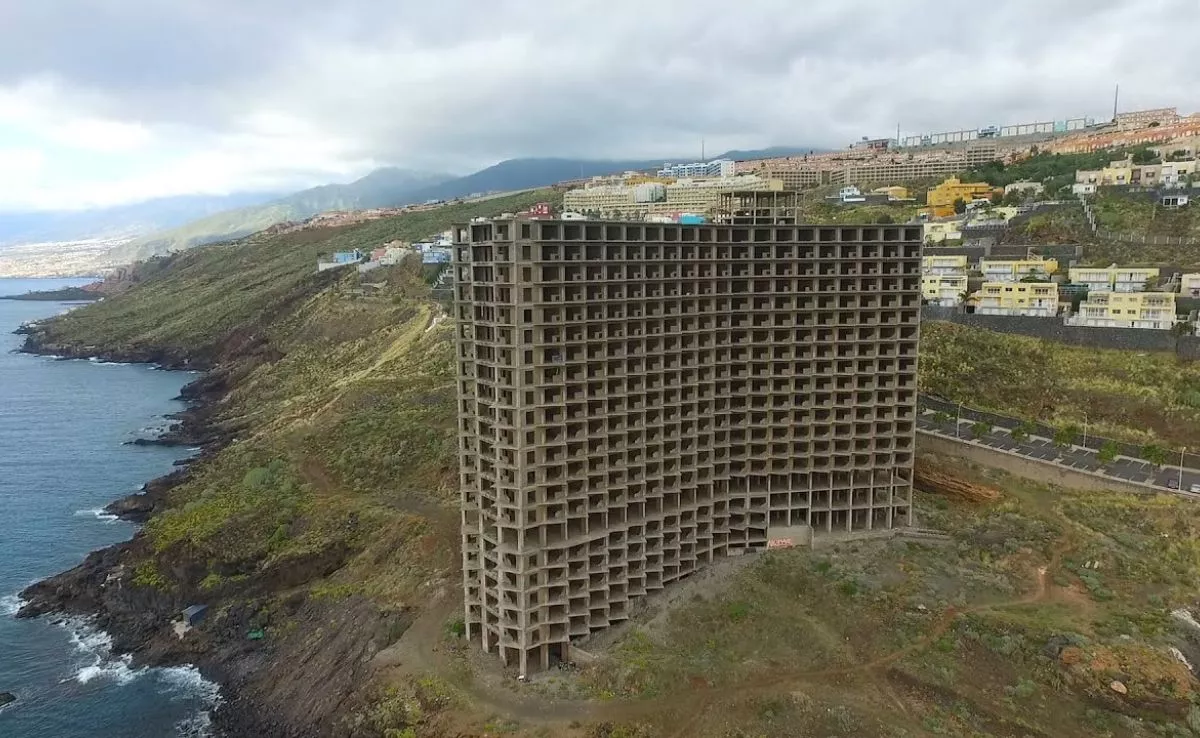
The Cabildo of Tenerife has approved a grant of 500,000 euros to the Santa Cruz de Tenerife City Council to facilitate the expropriation of the land where the abandoned Añaza building, more commonly known as the Añaza mammoth, stands.
This step is “essential” for advancing its demolition and for the landscape recovery of the coastal environment, according to the island institution.
The action has a total funding of three million euros, complemented by the 2.5 million euros granted by the Government of the Canary Islands.
As highlighted by the President of the Cabildo, Rosa Dávila, this institutional collaboration will “unlock a long-awaited project for the neighbourhood” and serves as an example of how to “continue to open Santa Cruz to the sea and return coastal spaces to its residents.”
The building is considered the ugliest on the Canary coast due to its large dimensions and the increasing state of deterioration after nearly 50 years of abandonment.
It was designed in 1973 as a luxury hotel with 741 apartments spread over 22 floors, but construction was halted in 1975 due to urban irregularities, financial problems, and the lack of final permits.
Since then, the structure, which occupies between 35,000 and 40,000 square metres, has remained abandoned and has become a disjointed mass that disrupts the coastal landscape and poses a safety risk.
In January, the Government of the Canary Islands and the Santa Cruz City Council took a step forward to end the construction: with the 2.5 million euros from the Ministry of Ecological Transition and Energy, the council committed to demolition within a period of 36 months and to undertake the renaturalisation of the space it occupies and its surroundings.
The Santa Cruz City Council aims to complete the expropriation throughout 2025 and subsequently put the demolition out to tender. It is estimated that the recovery of this stretch of coastline could be completed between 2027 and early 2028.
The project includes not only the demolition of the building but also the ecological regeneration of the area, the creation of green spaces, areas for walking and community interaction, and the construction of a maritime platform known as La Mareta, which will establish a safe swimming area.
Additionally, it includes the connection with the future coastal promenade, the protection of the archaeological heritage in the area, and its integration into the municipality’s sustainable mobility systems.
“What we want to do is to return access to the sea for the residents and transform an abandoned area into a natural, cared-for, and safe place,” emphasised the President of the Cabildo.
“It is about returning to Añaza a space that belongs to its people, a part of the coastline that should never have been lost and that can be lived in, enjoyed, and looked after by its residents,” concluded Dávila.















